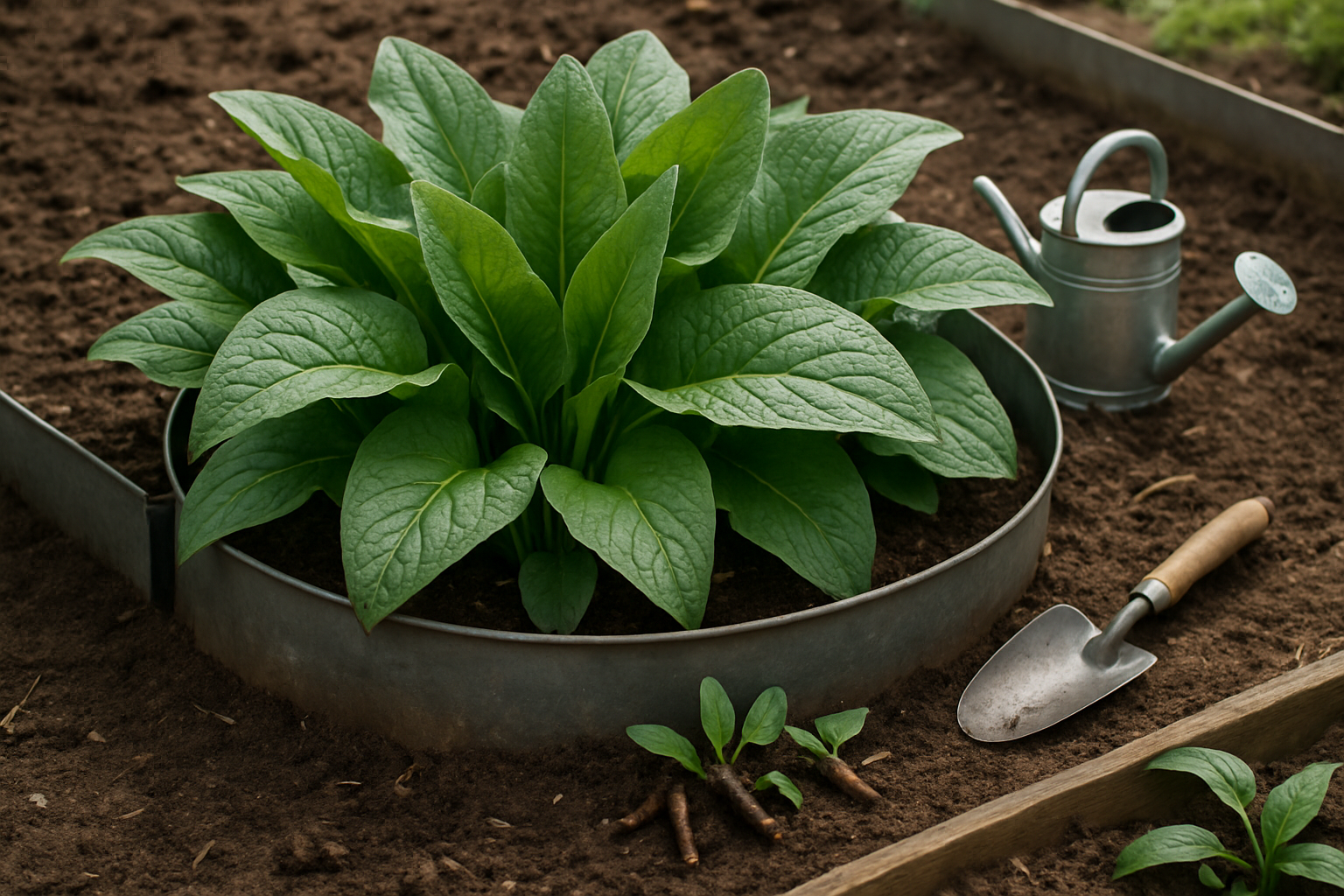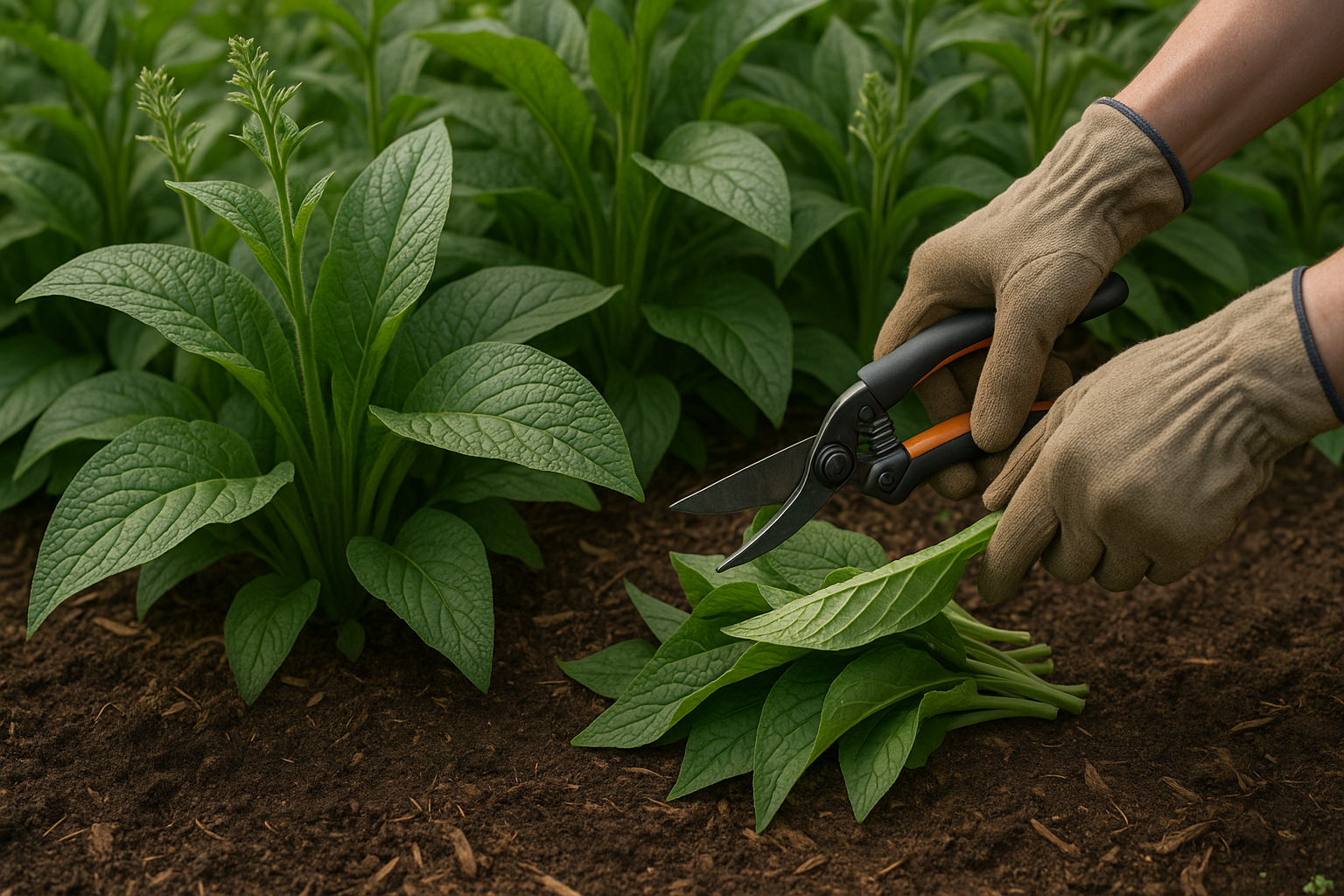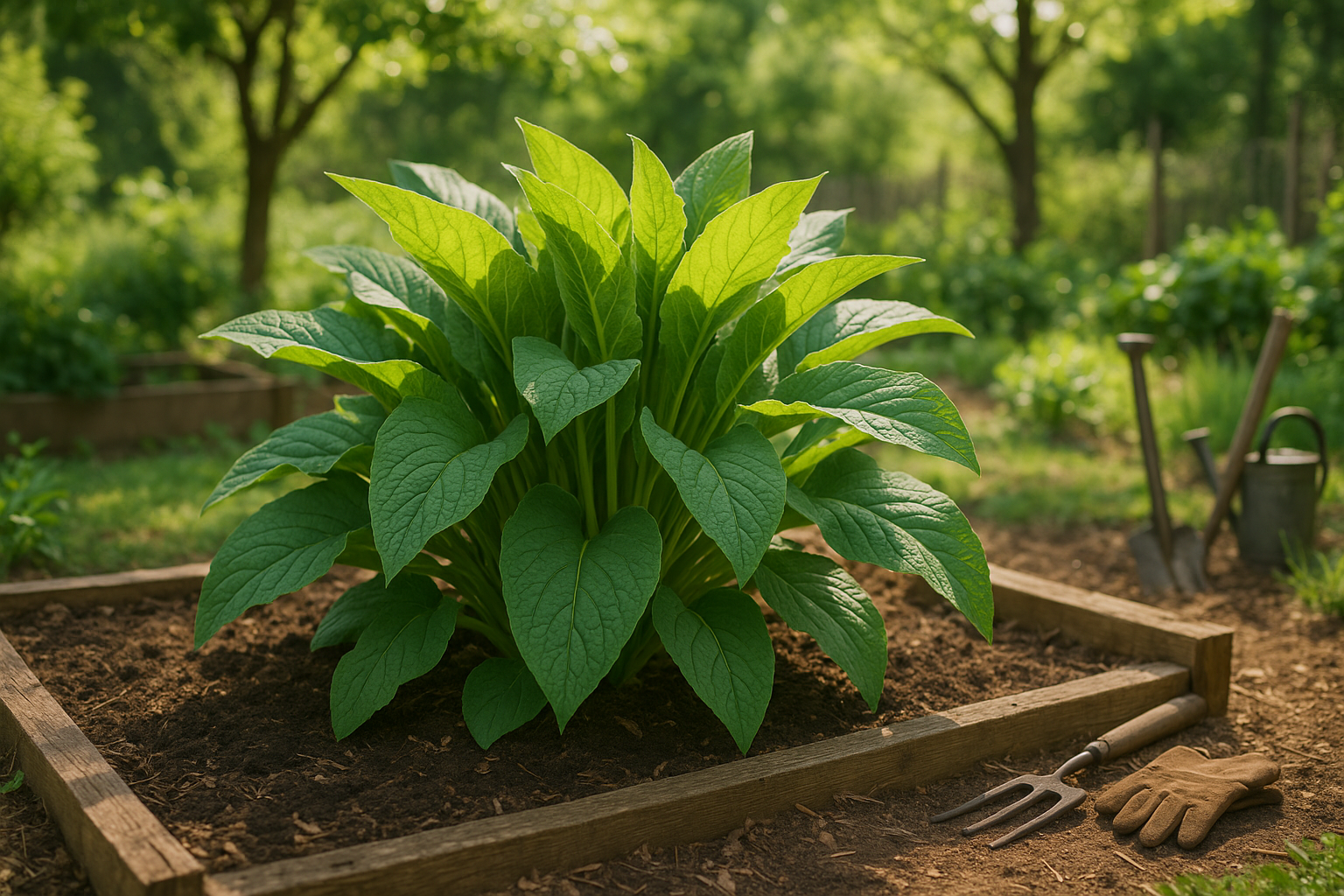Introduction
Comfrey is a powerhouse plant in any garden, prized for its lush leaves that create rich compost, its deep roots that improve soil health, and its many herbal benefits. However, even experienced gardeners can run into trouble if they make some common comfrey growing mistakes. Successfully cultivating comfrey requires a bit of know-how—choosing the wrong spot, planting at the wrong time, or neglecting its rapid growth can lead to stunted plants or an unmanageable patch.
In this article, we’ll uncover the pitfalls that often trip up both new and seasoned growers, such as poor site selection, overwatering, failing to control spreading, and misunderstanding the best harvest timing. Avoiding these issues will help you get the most from your comfrey patch—whether you’re nourishing your soil, enriching your compost pile, or harvesting leaves for home remedies.
Let’s dig in and set your comfrey up for thriving success!
Mistake #1

Planting comfrey in the wrong spot is a common mistake that can cause major headaches down the road. Comfrey grows deep, robust roots—sometimes plunging over six feet into the soil—and spreads quickly by both seeds and root fragments. If you try to move it later, even tiny bits of root left behind can regrow into new plants, making it almost impossible to completely remove.
Many gardeners underestimate just how vigorously comfrey expands, especially if it’s tucked in a temporary veggie bed or too close to paths and structures. That’s why it’s crucial to select a site where comfrey can stay for many years without causing trouble.
Aim for a dedicated corner of your yard, away from highly trafficked areas or garden beds you regularly rotate. Full to partial sun and well-drained soil are best, but comfrey is very tough and will tolerate imperfect conditions.
To keep it truly in check, consider growing comfrey inside a raised bed or a large bottomless container sunk into the ground, which helps contain those deep roots. Installing a sturdy root barrier like metal landscape edging (at least 12–18 inches deep) around your planting spot can also help prevent unwanted spread.
Planning ahead and giving comfrey its own permanent, manageable spot means less weeding, less frustration, and more time to use those nutrient-rich leaves in your garden.
Mistake #2
One of the biggest mistakes gardeners make with comfrey is underestimating just how vigorous this plant can be. Comfrey spreads not only by seed but—much more aggressively—through its deep roots and rhizomes. Even a small root fragment left behind during transplanting or division can sprout into a whole new plant, quickly turning a tidy patch into an unruly thicket that smothers neighboring herbs and vegetables.
Many people believe simply mowing or cutting comfrey will keep it in check, but this rarely works; in fact, it often encourages even more lush regrowth. To keep comfrey under control, always plant it where you’re comfortable letting it take up space or use physical barriers like deep edging or root-control panels to contain the roots.
- Space plants several feet apart to reduce underground competition.
- If you spot unwanted shoots popping up, promptly dig them out, being sure to remove as much of the root as possible.
- For ongoing maintenance, root pruning in early spring can help limit spread—just be ready for some back-breaking work, as comfrey roots dig deep!
If your comfrey patch does become a headache, removing the entire root system is necessary for eradication, and you may need to repeat the process, as stubborn bits can regrow. For most gardeners, a little vigilance upfront saves seasons of hassle down the line.
Mistake #3
Transplanting wild comfrey into your garden might seem like an easy, cost-saving shortcut, but it can lead to big problems. One common risk is misidentifying comfrey in the wild—there are several lookalike species that may not offer the same benefits, and some could even be invasive or toxic.
For example, Russian comfrey often self-seeds aggressively and can quickly take over an area, outcompeting your other plants.
Instead of digging up wild plants, always buy comfrey from reputable nurseries or online sources that specialize in the correct type, such as Bocking 14, a sterile hybrid known for its non-invasive growth and superior nutrient value as a fertilizer and animal feed.
When shopping, choose plants with:
- lush green leaves
- sturdy stems
- no signs of disease like yellowing, wilting, or spots
Avoid any root cuttings that look desiccated, moldy, or shriveled. Healthy comfrey sends up quick, robust new growth after planting and adapts well when started with care. Investing in trustworthy plant stock means a thriving comfrey patch—and a lot less hassle down the road.
Mistake #4

Harvesting comfrey at the right time—and in the right way—is crucial, yet it’s a spot where many gardeners slip up. One common mistake is harvesting too early, when the leaves are still small and tender, or waiting too late, when they become tough and lose potency. The optimal time is just before flowers appear, when the foliage is lush and full of nutrients.
Over-harvesting is another pitfall; taking too many leaves at once can stress the plant and stunt future growth. For best results, use clean, sharp shears to cut leaves about 2 inches above the crown, leaving several healthy leaves behind to fuel regrowth.
After harvesting, keep up regular maintenance by weeding around your comfrey patch—this reduces competition for nutrients and helps prevent pests. Every few years, divide crowded clumps to promote vigor and prevent disease buildup. If you’d rather your comfrey not spread by seed, remove flower stalks promptly.
Watch for pests like slugs and aphids; handpick them or use organic deterrents if they become a problem. Fungal issues, though rare, can be minimized by spacing plants for good airflow and avoiding overhead watering. Prioritizing careful harvesting and thoughtful care can keep your comfrey thriving year after year.
Mistake #5
Many gardeners are drawn to comfrey for its reputation as a powerhouse plant, but a common mistake is overlooking its safety and usage considerations—especially when it comes to ingestion or medicinal use. Comfrey contains pyrrolizidine alkaloids, compounds known to cause liver damage and even cancer if consumed, making it unsafe for teas, tinctures, or herbal remedies.
Ingesting comfrey or applying it to broken skin can pose serious health risks, so it’s best to avoid these practices altogether. Instead, comfrey shines as a sustainable gardening resource:
- Its nutrient-rich leaves break down quickly in compost.
- They boost garden beds as mulch.
- They make excellent green manure to naturally fertilize soil.
Always wear gloves when handling fresh comfrey to prevent skin irritation, and keep curious pets and children away from harvested leaves or steeping comfrey liquid. Ensure any homemade comfrey fertilizer is properly diluted to avoid harming plants or contaminating water sources.
By respecting these safety guidelines, you can confidently enjoy comfrey’s benefits in the garden while protecting your family, pets, and the environment from potential harm.
Conclusion
Growing comfrey can be hugely rewarding, but it’s easy to slip up by planting it where you can’t control its spread, overwatering, or ignoring its need for well-drained soil. Avoid letting it go to seed unless you want more plants than you bargained for, and don’t underestimate how deep its roots go—they’re tough to move once established!
Stay proactive by regularly harvesting leaves and trimming flowers, and choose a permanent spot for planting. With a little planning and regular care, you’ll harness comfrey’s benefits—rich mulch, compost, and pollinator support—without it becoming a garden nuisance. Happy growing!
